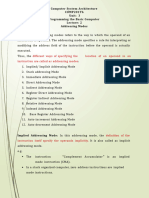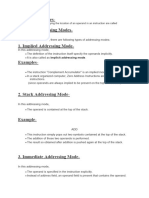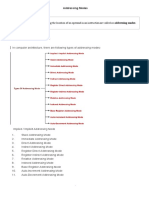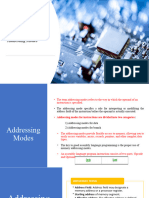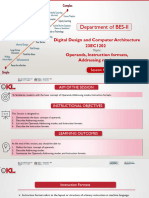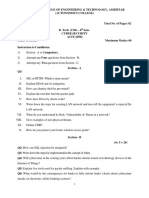0% found this document useful (0 votes)
14 views4 pagesAddressing Modes
The document discusses various addressing modes used in computer architecture to specify the operand of an instruction. It outlines twelve different addressing modes, including Implied, Stack, Immediate, Direct, Indirect, Register Direct, and Register Indirect Addressing Modes, each with a brief explanation and example. The addressing modes determine how the address field of an instruction is interpreted or modified before execution.
Uploaded by
DR T. Bhaskara ReddyCopyright
© © All Rights Reserved
We take content rights seriously. If you suspect this is your content, claim it here.
Available Formats
Download as PPT, PDF, TXT or read online on Scribd
0% found this document useful (0 votes)
14 views4 pagesAddressing Modes
The document discusses various addressing modes used in computer architecture to specify the operand of an instruction. It outlines twelve different addressing modes, including Implied, Stack, Immediate, Direct, Indirect, Register Direct, and Register Indirect Addressing Modes, each with a brief explanation and example. The addressing modes determine how the address field of an instruction is interpreted or modified before execution.
Uploaded by
DR T. Bhaskara ReddyCopyright
© © All Rights Reserved
We take content rights seriously. If you suspect this is your content, claim it here.
Available Formats
Download as PPT, PDF, TXT or read online on Scribd
/ 4
